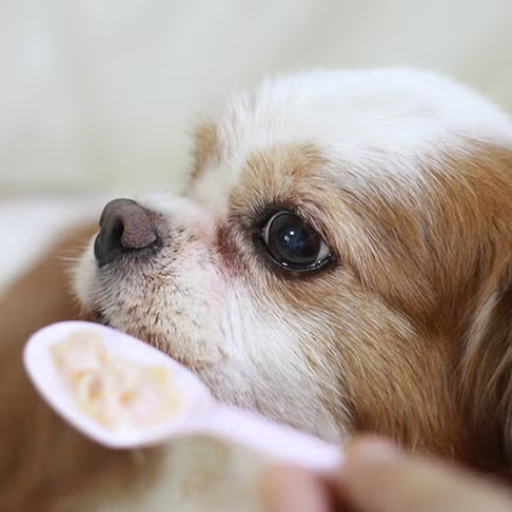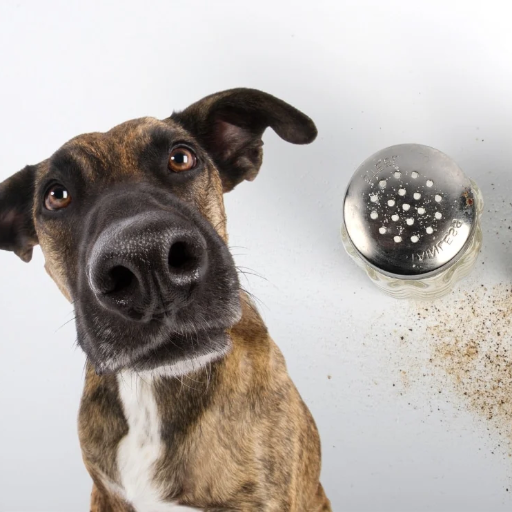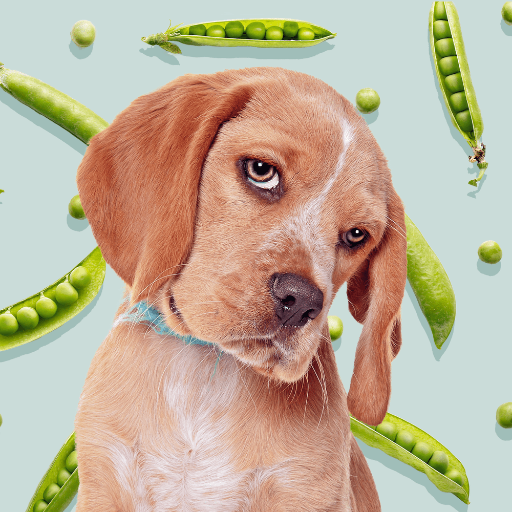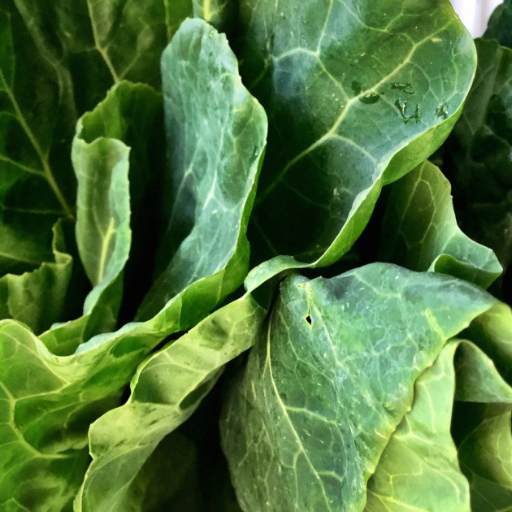Cats, much like pets, present challenges for their owners, especially when it comes to their peculiar dietary habits. This brings us to the question of whether felines can eat bananas. This well-loved fruit is quite healthy for humans but as an owner, it is crucial to first understand how it can affect your pet before offering some. Cat’s diets carry nutritional value whenever safe human food is incorporated into the mix. Bananas carry both risks and benefits to cats yet as pet owners we need to carefully evaluate unreasonable hazards.
Are Bananas Safe for Cats to Eat?

Cats and Their Relationship With Bananas
As with most fruits, a cat can eat bananas in tiny amounts as there is no evidence to show that bananas are toxic to cats. As fascinating as these reptiles are, they do not need to consume them because their primary source of nutrition, being an obligate carnivore, comes from meat. While the odds of hurting a cat by giving a piece of banana once in a while are slim, it is always necessary to keep a watchful eye for any negative reactions such as vomiting or diarrhea. Too much of anything is bad. In this scenario, regular consumption would increase the chances for weight gain or other health-related issues because bananas are overloaded with natural sugars. If there is hesitation regarding whether or not to give a pet banana, it is always best to consult a vet beforehand.
What’s the Ideal Amount of Banana for Cats?
Feeding bananas to cats should be done in moderation. An appropriate amount would be small, roughly the size of blueberries or thinly sliced at most. It should be served as an infrequent reward instead of a daily dietary staple. Felines are obligate carnivores which means they’re primarily reliant on meat, so fuel sources such as bananas need to be kept to a minimum. Not meeting these requirements can lead to obesity or other side effects like overfeeding and digestive issues, so taking precaution is the optimal option. If offered, the banana should also be fresh, peeled, and cut into manageable portions to reduce potential choking risks. If giving bananas to your cat for the first time, make sure to observe their response. If any negative reactions such as vomiting or diahoreah occur, stop immediately. If there are concerns regarding the use of bananas or other human foods intended for cats, a consultation with a veterinarian should be scheduled.
Understanding the High Sugar Content in Bananas
Bananas contain sugar which, in large quantities, can be dangerous for cats as their bodies are not built to handle large amounts of sugar. Even if the source of sugar is natural, such as fruit, it can contribute to weight gain, dental issues, or more severe concerns such as diabetes over time. While offering a small piece of banana once in a while should be tolerated by most cats, the serving size and frequency need to be very closely monitored. It goes without saying that a cat’s nutritional needs should come from the correct species-specific cat food, not human “treats.”
Why Do Cats Like Bananas?
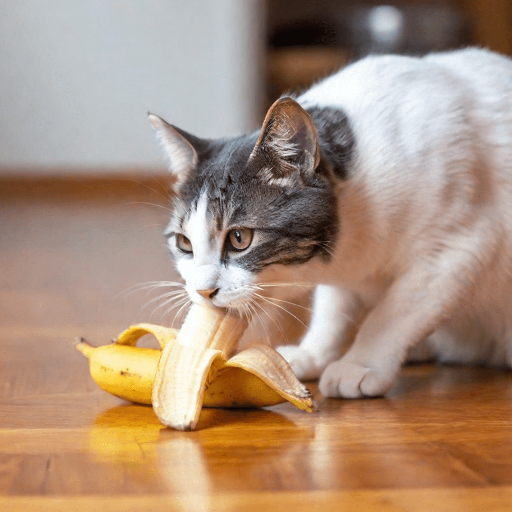
Do Cats Even Like Bananas?
Bananas can be appealing to some cats with regard to their texture or scent, so some cats may be curious about them. Cats are obligate carnivores which means that one of the main dietary requirements that they have is meat, so a fruit like a banana would not be a part of their diet. Still, the inquisitive champions of nature that cats are, some might sniff, lick, or even bite, albeit a small one, out of curiosity. As with most things in life, moderation is key and this mantra applies to feeding cats bananas too because it would be unwise to offer unrestricted access to a food that has high concentrations of sugar and canes. Even if a cat seems to enjoy bananas, it is crucial to remember that due to their anatomy, cats can’t deal with substantial amounts of sugar or plant-based food, so they should be offered in very limited amounts.
Do Cats Like Sweet Foods?
Since cats do not have taste receptors that detect sweetness, they cannot appreciate sugary tastes like humans. However, their curiosity may lead them to try sweet foods like bananas and other confections, but only because of the texture, not because of the so-called taste. Their attraction to such foods at times is more about adventurous exploration rather than a tendency towards sweet items. Whichever the case may be, a responsible pet owner should keep an eye on their cat’s diet while ensuring new treats are introduced in small portions to avoid digestive distress or needless sugar consumption.
How to Feed Bananas to Your Cat Safely?
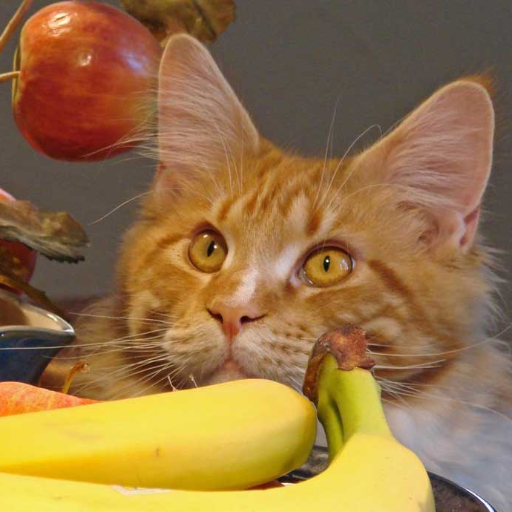
Moderate Feeding of Bananas
When it comes to giving your feline bananas, moderation is key. Shred the banana into small pieces to ensure that your cat does not struggle when swallowing the pieces. Make sure to take off the peel since it may pose a choking hazard for your cat and is also quite difficult to digest. If your cat seems like they are not willing to give it a try, think about mixing some bits into the food or mashing it. Also, watch out for some signs of distress, or other negative symptoms such as vomiting or diarrhea. Stop giving them bananas and call your vet if you see any unusual signs. Bananas should be served as a rare treat, and should not be incorporated into the normal meal plan for the cat. Serving the right type of food is crucial in maintaining the health and safety of your cat.
Potential Choking Hazards: The Importance of Size
When offering a cat a banana, one must always keep in mind the importance of size with respect to potential choking hazards. You should always slice the banana into tiny bits which your cat can chew and swallow. Larger pieces could pose a serious threat. Furthermore, ensure that the banana slices are devoid of peel, tender, and soft. The toughness of the peel could increase the risk of choking and gastrointestinal trouble.” Prioritizing your safety measures while keeping a watchful eye on your cat during feeding can enhance the experience minimizing risk factors.
Introducing Bananas as a New Food
To introduce bananas in the diet of my cat, i would take my time and try to be as careful as possible. To begin with, I would make sure that the banana is fresh and ripe as well as cut into very small bite-sized pieces which are easy to chew and swallow for my cat. Since cats are more petite and have smaller throats than humans, I know chunks that are too large could pose a choking risk. Considering that removal of the peel will be important, my cat could find it tough to digest which in turn would cause discomfort. In this situation, I would have to ensure that I remove the peel before giving it to my cat. I would also observe my cat while they consume the banana to determine if they are managing well or not. All these steps give me a reasonable feeling that my cat’s safety and comfort can be prioritized.
What Are the Risks of Feeding Bananas to Cats?

Possible Digestive Issues: Diarrhea and Vomiting
It is possible that giving cats excessive amounts of bananas may lead to complications such as diarrhea and vomiting because their sugar and fiber levels are hard to digest due to their complex digestive system. Even though cats do not suffer from any major consequences from eating bananas, the natural sugars found in bananas are likely to upset a cat’s stomach if overindulged. Moreover, some cats may be allergic and develop an allergic reaction which results in feline disorder or pain. Monitor your pet for a few days after feeding the fruit. If any signs persist, take them to a vet.
The Reason Why Cats Are Obligate Carnivores
Cats are obligate carnivores because their bodies derive essential nutrients specifically from animal-based proteins as their taurine, vitamins A, and Arachidonic acid are only found in animal tissues. Unlike cats, omnivores are able to produce these nutrients. Cats also have highly specialized digestive systems for processing meat with shorter tracts and minimal ability to break down plant material. Cats’ must eat meat to maintain their well-being. A balanced diet that isn’t meat based can lead to critical health issues and nutritional deficiencies.
Consulting Your Veterinary
To maintain my cat’s health, I always make it a point to consult with my veterinarian. My vet is capable of addressing all of my concerns with my cat’s nutrition and general health. Be it their food-or how to recognize signs of nutritional deficiency, or whether a specific diet would suit my cat, my vet helps with everything. Consulting them helps me guarantee that my cat receives an adequate balanced diet which fulfills all the dietary requirements essential for my cat to live happily and healthily.
Can Kittens Eat Bananas?

Special Considerations for Feeding Kittens
In small, non-harmful quantities, kittens may eat bananas, but it is neither a required part of their nutritional regimen nor recommended. Bananas do not pose any danger for kittens, however, their digestive systems are still in the development stage which means they are likely to have a hard time trying to process sugary or starchy foods. It is important to provide a diet formulated specifically for kittens to ensure they receive the right nutrition essential for their growth and development. Should you offer a tiny portion of banana as a reward, remember to properly mash or cut it into tiny bits to prevent choking. Always observe your kitten after introducing new treats, and be on the lookout for signs of digestive discomfort or abnormal behavior. Lastly, remember to consult a vet if there is any uncertainty regarding dietary decisions for your kittens.
How to Balance A Kitten’s Diet and Human Foods
We’d like to clarify that certain human foods can be safe for kittens in small portions. However, they should primarily be fed high-quality kitten food that meets their nutritional needs. Take bananas, for instance. They are non-toxic to cats, but due to their high sugar content, should only be offered as an occasionally treat. When preparing bananas for kittens, always slice them into small, digestible pieces to prevent choking. Watch your kitten closely during this time just in case they have any adverse effects. Your veterinarian can best advise you about any additional foods you would like to offer your kitten, while ensuring it is safe for their health, development, and growth.
Reference sources
-
Study: Eating Banana in Cats for Brain Stimulation Reward1
- Objective: To explore the influence of hypothalamic stimulation on cats’ food preferences, particularly for bananas.
- Methodology: Hungry cats were offered bananas and meat pellets. Electrical stimulation of the hypothalamus was used as a reward for consuming bananas.
- Key Findings: Cats preferred bananas over meat pellets when rewarded with hypothalamic stimulation. Without stimulation, they reverted to ignoring bananas. This suggests that external stimuli can influence unusual food preferences in cats.
-
Study: Characteristics of Plant Eating in Domestic Cats2
- Objective: To investigate why domestic cats eat plants and whether this behavior is linked to illness, vomiting, or hairball expulsion.
- Methodology: Two surveys were conducted with over 3,000 cat owners to analyze plant-eating behaviors.
- Key Findings: Most cats did not show signs of illness before eating plants, but 27-37% vomited afterward. Plant eating was not linked to hairball expulsion, and younger cats ate plants more frequently. The study concluded that plant eating is likely an innate behavior rather than a response to illness.
-
Study: Imitation of Mother’s Inappropriate Food Preference in Weanling Kittens3
- Objective: To examine how kittens adopt food preferences from their mothers, even for unusual foods like bananas.
- Methodology: Mother cats were trained to eat bananas or mashed potatoes in the presence of meat pellets. Kittens observed and imitated their mothers’ food choices.
- Key Findings: Kittens imitated their mothers’ preferences for bananas or potatoes, even when these foods were atypical for their species. This behavior persisted into later stages of life, highlighting the role of maternal influence in shaping dietary habits.
Frequently Asked Questions (FAQs)
Q: A cat’s interaction with bananas, is it safe?
A: Cats can consume a small amount of bananas, however they should do so rarely. Like many other fruits, bananas are not toxic to cats, but should be used as an occasional treat because they are high in sugar. Cats are obligate carnivores, or primarily meat eaters.
Q: Are bananas safe for cats to eat?
A: In moderation, bananas are generally safe for cats to consume. As with any other food, they should be properly prepared for easier consumption, so the peel should be taken off and only a small portion should be presented.
Q: What should I know about feeding bananas to my cat?
A: Make sure no choking hazards exist and offer them small portions, as this will minimize potential choking hazards or digestive problems.
Q: Can bananas cause digestive problems for cats?
A: If an unaccustomed cat consumes too much bananas, it could lead to gastrointestinal complications or constipation. To avoid this, gradually increasing the amount given, starting with a small slice can be helpful.
Q: Why do some cats love bananas while others are afraid of them?
A: Cats have different reactions to bananas for several reasons. Some may enjoy bananas and be very curious because of their taste and texture, while others may be afraid of the smell or shape of bananas.
Q: Is banana peel dangerous for cats?
A: Undoubtedly, the banana peel is dangerous for cats. It represents a choking risk which is not digestible so it is important to get rid of the peel before giving a slice of banana to your cat.
Q: Are bananas a good cat treat?
A: Yes, for cats, bananas make a good occasional snack but should be given in moderation to prevent an overload. They have potassium which is good for them but since bananas are loaded with sugar, cats don’t normally eat.
Q: How can I feed bananas safely to my cat?
A: For safely feeding your cat bananas, take of the peel and cut a thin slice which you can present as a treat. Like with any new food, you must monitor for any negative reactions.
Q: Are there any health benefits of bananas for cats?
A: In the case of cats, bananas can provide a minimal amount of potassium, so it is helpful. But don’t expect much from it as cats primarily need meat. Always consult with a vet if your cat has special needs.
Q: Should I consult a vet before giving bananas to my cat?
A: It’s always good to talk with a vet about questions related to cats and bananas, unless advised otherwise by your specialist. This is very important if your cat has any special health conditions or dietary restrictions.




